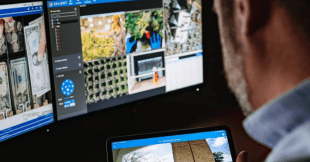
As seen in Security Journals Americas
 Can you tell me about yourself and your role?
Can you tell me about yourself and your role?
I am Salient Systems’ Chief Product Officer and joined the company back in early 2020 – right as we were going into lockdown. I’ve been primarily responsible for helping to develop and bring to market an exciting new cloud service offering. As a result, we’ve had the chance as a company to better understand how the cloud fits in the surveillance and security space.
What is Salient Systems’ overall mission?
We are a technology provider and have introduced a cloud service offering that allows people to remotely manage, monitor and gain secure access to their video assets.
Very recently, we also introduced an analytics offering to bring intelligence to video. Our goal fundamentally is to help businesses tap into all of the intelligence in a surveillance system and use that not just to help with safety and security, but to address organizational operations, customer experience and other business outcomes.
What is the importance of the cloud in video surveillance?
It’s a shifting landscape we find ourselves in. For a long time, surveillance was a very closed system, but one major trend that has changed the way the industry thinks is remote access, which came about as a result of the pandemic.
Our goal fundamentally is to help businesses tap into all of the intelligence in a surveillance system.
As so many people needed to perform their job responsibilities off-site, those who have day-to-day exposure to surveillance platforms increasingly required more flexibility. This was a catalyst for systems to become more sophisticated and include the capability for remote monitoring.
Cloud is also a trend due to increasing IT involvement – where IT wants less of a burden to manage, so there is growing pressure and interest in cloud-based solutions. In addition, there are other stakeholders that are involved in managing and maintaining the system and who need scalability. This has led to the development of a variety of different cloud-based systems or architectures, as several companies want more ownership, with the ability to configure or customize their platform.
For companies looking to use the cloud, it’s important to consider that there are distinct, viable deployment patterns. You have to choose the model that’s the most appropriate for you and your business. There is no one-size-fits-all answer for cloud solutions.
Can you tell me about some of the key takeaways from your upcoming webinar?
The focus of this webinar will be understanding the role of the cloud in deployment patterns. We’ll be discussing on-premise use cases to hybrid cases and all the way to pure cloud, covering the pros and cons of each. We want to help those listening understand which pattern is most appropriate for them.
Think of it as a guideline or a menu; we’ll present all the items available as well as the advantages and disadvantages of each, so that listeners can have the tools to determine which solution is most appropriate for them.
Sanjay Challa
Sanjay Challa is Salient’s Chief Product Officer, and brings years of experience in product marketing and product management in both hardware and software technology products. Sanjay obsesses over customers and the VMS market in order to keep Salient’s products useful, relevant, and enjoyable.
Prior to Salient, Sanjay was the Director of Product at Datical, and prior to that the Director of Product at Hypori. Sanjay holds a Bachelor of Science degree from Georgia Tech.




